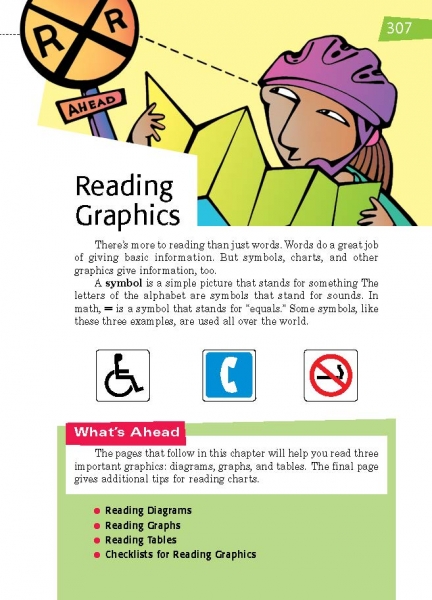Page 307 from

Start-Up Activity
Have students turn to page 478, which presents many traffic signs and symbols. Have volunteers explain each one. During your discussion, note that each type of sign has a designated color. Ask students why it is important to be able to read graphics like these and if they know examples of additional ones. Point out that dictionaries have a special section for signs and symbols. Students should refer to this section as needed. Then have them create new signs or symbols that could benefit school and/or public life. Finally, have a volunteer read page 307 aloud.
Think About It
“A picture is worth a thousand words.”
—Fred. R. Barnard

Start-Up Activity
Have students turn to page 478, which presents many traffic signs and symbols. Have volunteers explain each one. During your discussion, note that each type of sign has a designated color. Ask students why it is important to be able to read graphics like these and if they know examples of additional ones. Point out that dictionaries have a special section for signs and symbols. Students should refer to this section as needed. Then have them create new signs or symbols that could benefit school and/or public life. Finally, have a volunteer read page 307 aloud.
Think About It
“A picture is worth a thousand words.”
—Fred. R. Barnard



